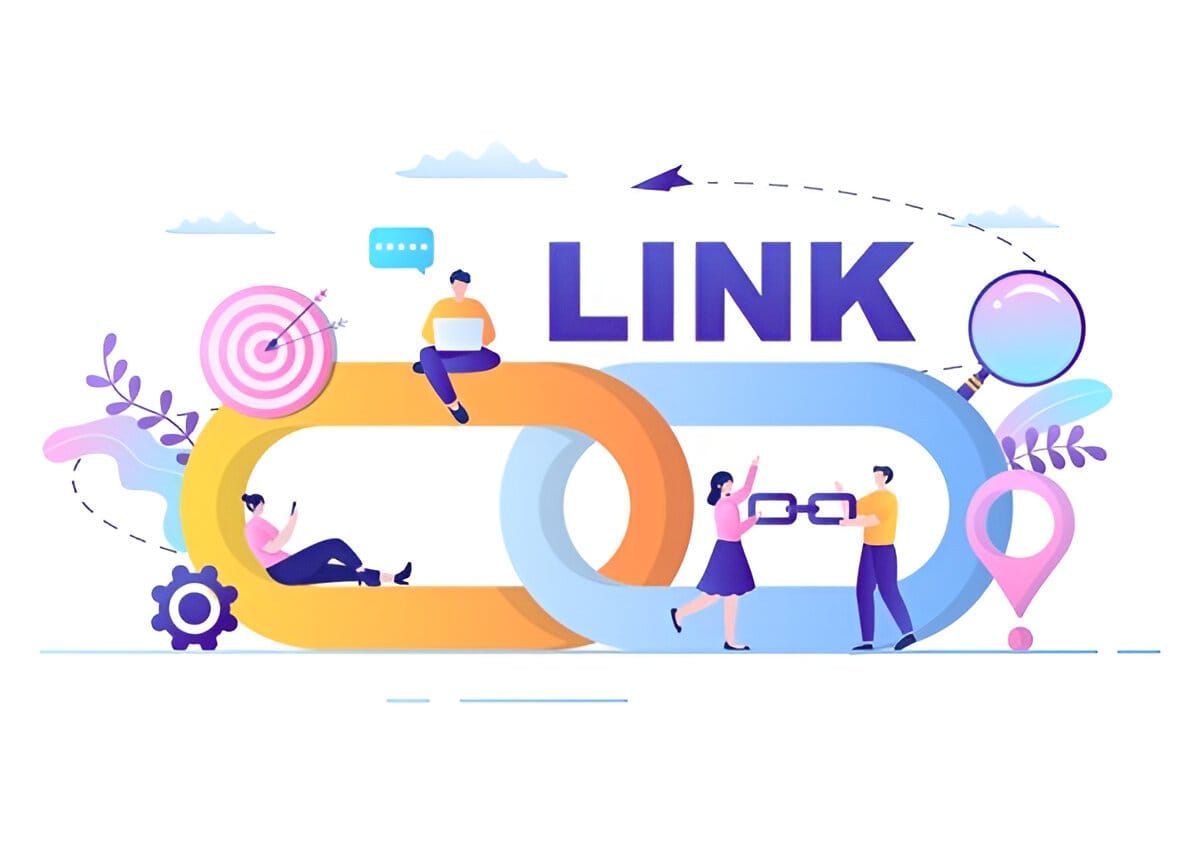
Mastering Backlink Analysis: Essential Techniques to Skyrocket Your SEO Strategy
Table of Contents
Essential Techniques for Effective Backlink Analysis
In the ever-evolving digital marketing landscape, backlinks remain a cornerstone for enhancing the online visibility and authority of websites. But what exactly is a backlink, and why do they matter? In essence, a backlink is a hyperlink from one website to another, serving as a vote of confidence for the receiving site. The more high-quality backlinks a site garners, the better it generally performs in search engine rankings. However, not all backlinks are of the same caliber. Understanding their intricacies is crucial for mastering backlink analysis. This in-depth guide will navigate you through the art of backlink analysis, emphasizing the significance of backlink quality, monitoring new and lost links, identifying toxic links, exploring various backlink types, and leveraging competitor strategies.
Understanding Backlink Quality

The quality of a backlink is a decisive factor in how it influences your website's SEO performance. High-quality backlinks, originating from reputable and authoritative sites related to your niche, are invaluable. Here are the primary elements to consider when evaluating backlink quality:
1)Relevance
The relevance of a backlink is paramount. A link from a site pertinent to your niche holds more weight than a link from an unrelated site. Search engines give precedence to relevant links, making it imperative that your backlinks originate from sources that align with your industry. This alignment enhances the perceived value of your website.
To ensure relevance, consider the content context of the linking site. Are they writing about topics that are similar to or complement yours? This contextual relevance signals to search engines that your site is a credible source within your niche. Additionally, assess the thematic consistency of the linking domain; a site that consistently covers topics in your industry is likely to provide more valuable backlinks.
2) Authority
Domain Authority (DA) is a metric that evaluates the credibility and influence of a website. Websites with high DA are deemed more trustworthy. Tools like Moz, Ahrefs, and SEMrush offer insights into the DA of sites linking to yours. Pursuing backlinks from high-authority domains can significantly bolster your site's credibility.
When targeting sites for backlinks, prioritize those with a proven track record of quality content and robust online presence. These sites not only enhance your SEO but also lend your brand additional credibility. Moreover, diversify your link sources; acquiring backlinks from a variety of high-authority sites can mitigate risks associated with algorithm changes that might affect a single linking domain.
3) Traffic
Backlinks from sites with substantial traffic can channel more visitors to your own site, potentially boosting conversions. Evaluating the traffic metrics of a prospective backlink source can provide insights into the potential impact of the link.
Consider the engagement levels of the linking site. High traffic is beneficial, but engaged and active visitors are more likely to click through to your site. Look for sites with a balance of high traffic and high engagement to maximize the potential return on your backlink investment. Additionally, analyze the geographic and demographic alignment of the traffic; a site with an audience similar to yours will likely drive more relevant visitors.
4) Anchor Text
Anchor text, the clickable text in a hyperlink, plays a crucial role in backlink analysis. It not only informs search engines about the content of the linked page but also influences the perceived relevance of the backlink.
To optimize anchor text, ensure it is relevant to the linked content while maintaining variation. Over-optimization with repetitive anchor texts can trigger search engine penalties. Employ a mix of branded, exact-match, and long-tail keywords in your anchor texts to maintain a natural profile. Additionally, consider the surrounding context of the anchor text; the sentences or paragraphs around it should also be relevant to the linked content, reinforcing its value to search engines.
Analyzing New and Lost Links to Boost Your Rankings

Monitoring the ebb and flow of new and lost backlinks is essential for maintaining a robust link profile. Here's how to effectively manage this dynamic process:
New Links
Tracking new backlinks is vital for assessing the effectiveness of your link-building strategies. By understanding which tactics yield results, you can capitalize on successful methodologies. Utilize tools like Ahrefs or Google Search Console to identify new links and evaluate their quality.
When a new link is acquired, analyze the context in which it was earned. Was it due to a specific piece of content, a partnership, or a campaign? This insight can guide future efforts in replicating successful link-building strategies. Additionally, track the performance of these new links over time; assess whether they contribute to increased traffic or improved search rankings.
Lost Links
Losing backlinks is a natural occurrence but understanding the reasons behind it is crucial. Regularly monitor lost links to identify patterns and address any issues. If high-quality and valuable links are lost, reaching out to webmasters to reclaim them can be a worthwhile effort.
Investigate the causes of lost links—was it due to content removal, site restructuring, or broken links? Identifying these factors can help you implement preventative measures. Furthermore, explore alternative link opportunities if recovery isn't feasible; sometimes, establishing new, even stronger connections is possible.
Retaining Valuable Links
Maintaining valuable backlinks requires ongoing effort. Engage with webmasters and content creators who have linked to you in the past to foster relationships that may lead to additional linking opportunities. Consider offering updated content or new insights that could be beneficial to their audience.
Proactively maintaining your content can also help retain links. Regularly update and improve high-performing content to ensure it remains relevant and worthy of existing backlinks. Additionally, employ strategies such as broken link building; by identifying broken links on high-authority sites, you can suggest your content as a replacement, potentially gaining new backlinks.
Identifying Toxic Links

Not all backlinks are beneficial. Some, known as toxic links, can damage your site's SEO and may even result in penalties from search engines. Here's how to identify and handle these detrimental links:
Signs of Toxic Links
Toxic links often originate from spammy or irrelevant sites, feature excessive exact-match anchor text, or come from sites with low domain authority. These characteristics can signal to search engines that the link is manipulative or of poor quality.
Analyze the context and intent behind the link. If the linking site has numerous outbound links with little relevance or value, it's likely a link farm or part of a spam network. Additionally, check for sudden spikes in low-quality links, which might indicate negative SEO attacks. Identifying these patterns early can prevent potential harm to your SEO.
Handling Toxic Links
Once identified, handling toxic links promptly is crucial. Use tools like SEMrush or Ahrefs to pinpoint these links. Reach out to webmasters to request removal, providing clear reasons why the link is inappropriate. If removal requests are unsuccessful, Google's Disavow Tool can be employed to inform search engines to disregard these harmful links.
Regularly auditing your backlink profile can prevent the accumulation of toxic links. Set up alerts for new backlinks to quickly identify potential issues. Additionally, consider implementing a quarterly or bi-annual review process to ensure your link profile remains healthy and aligned with your SEO goals.
Preventing Toxic Link Accumulation
Prevention is better than cure when it comes to toxic links. Implement proactive measures, such as setting guidelines for your link-building team to avoid low-quality link sources. Educate your team about the characteristics of toxic links and the importance of maintaining a clean link profile.
Building a robust network of high-quality, authoritative sites can help overshadow any potential negative impact from toxic links. By focusing on earning links from credible sources, you create a buffer that enhances your site's overall link profile. Additionally, fostering relationships with reputable sites can lead to opportunities for positive link exchanges, further mitigating risks associated with toxic links.
Types of Backlinks
Understanding the various types of backlinks is fundamental in crafting effective link-building strategies. Different backlinks serve different purposes and offer unique benefits. Here are some common types:
Editorial Links
Editorial links are the gold standard in backlinking. These natural links are given by other websites when they find your content valuable and worthy of sharing. Due to their authenticity and relevance, they are the most desirable type of backlinks.
To attract editorial links, focus on creating high-quality, unique content that addresses common pain points or provides new insights in your industry. Engage with your audience and industry influencers to increase the visibility of your content. Additionally, ensure your content is easily shareable by optimizing it for different platforms and formats.
Guest Blogging Links
Guest blogging involves contributing content to other websites in exchange for a backlink. It's a strategic way to reach new audiences and build authority in your niche. When pursuing guest blogging opportunities, ensure the host site's audience aligns with your target audience for maximum impact.
When crafting guest posts, tailor your content to suit the host site's tone and style while subtly incorporating your unique voice. This alignment increases the likelihood of acceptance and enhances the credibility of your content. Furthermore, establish long-term relationships with host sites to secure ongoing guest blogging opportunities, which can lead to multiple backlinks over time.
Directory Links
Submitting your site to online directories can help gain backlinks, but it's essential to choose reputable directories relevant to your industry. This strategy can enhance your site's visibility and authority if executed correctly.
Research and select directories that have a history of quality listings and positive user engagement. Avoid low-quality, spammy directories that could harm your SEO. Additionally, ensure your directory submissions are accurate and consistent across platforms to maintain a cohesive online presence.
Social Media Links
While not always direct contributors to SEO, social media links can drive traffic and increase brand awareness. Links shared on platforms like Facebook, Twitter, and LinkedIn can lead to increased visibility and potentially result in natural backlinks from users who discover and share your content.
To maximize the impact of social media links, engage actively with your audience by responding to comments and participating in discussions. Create shareable content tailored to each platform's unique audience, and consider collaborations with social media influencers to broaden your reach and enhance your backlink profile.
Competitor Backlink Strategies

Analyzing competitor backlink strategies offers valuable insights into what works in your industry. By understanding their approaches, you can discover new opportunities for your own link-building efforts. Here's how to effectively leverage competitor insights:
Identify Top Competitors
Begin by using SEO tools to identify your top competitors with strong backlink profiles. These competitors are likely employing effective strategies that you can learn from. Study their online presence to understand their approach to link-building.
Once identified, categorize competitors based on their strengths, such as content creation, partnerships, or social media engagement. This categorization can help you tailor your analysis to focus on areas that align with your strategic goals. Additionally, pay attention to emerging competitors, as they may employ innovative tactics that could inspire your own strategies.
Analyze Competitor Backlinks
Delve into the types of sites linking to your competitors and the anchor texts used. This analysis can reveal patterns and potential gaps in their strategies that you can capitalize on. Identify high-quality links that your competitors have obtained and explore opportunities to earn similar links for your site.
Focus on understanding the relationship dynamics between your competitors and their linking sites. Are they collaborating on content, or are the links resulting from organic mentions? This insight can inform your approach to building relationships with potential link partners. Additionally, examine any content themes or topics that consistently attract backlinks for your competitors, as these may present opportunities for your content creation efforts.
Emulate and Innovate
While emulating successful competitor strategies is beneficial, avoid simply copying them. Instead, innovate by creating unique content and building relationships with authoritative sites in your niche. This approach not only differentiates your brand but also enhances your credibility.
Consider developing content that offers a fresh perspective or addresses unmet needs within your industry. Engage with your audience to understand their preferences and tailor your content accordingly. Additionally, leverage your unique strengths, such as proprietary data or expert insights, to create compelling content that naturally attracts backlinks. By combining emulation with innovation, you can craft a distinctive link-building strategy that sets you apart from competitors.
Building a Robust Link Building Strategy

A well-structured link-building strategy is crucial for enhancing your website's authority and search engine rankings. Here's how to build an effective strategy:
1) Set Clear Goals
Defining clear goals is the foundation of any successful link-building strategy. Determine what you want to achieve, whether it's increasing traffic, improving search rankings, or enhancing brand awareness. Clear objectives guide your efforts and help measure success.
When setting goals, consider both short-term and long-term objectives. Short-term goals might focus on acquiring a specific number of high-quality backlinks, while long-term goals could involve establishing your brand as an industry authority. Additionally, align your link-building goals with broader business objectives to ensure they contribute meaningfully to your overall success.
2) Create High-Quality Content
Content is the cornerstone of any link-building strategy. Creating valuable, shareable content naturally attracts backlinks from authoritative sites. Invest in content that addresses audience needs, solves problems, or provides unique insights.
To maximize content effectiveness, conduct thorough research to understand your audience's preferences and pain points. Use this information to craft content that resonates with them and encourages sharing. Additionally, explore diverse content formats, such as videos, infographics, and case studies, to reach a wider audience and increase the likelihood of earning backlinks.
3) Network and Build Relationships
Networking is a powerful tool for link-building. Building relationships with influencers, bloggers, and industry leaders can lead to natural backlink opportunities and amplify your reach. Engage actively with your network to foster mutually beneficial connections.
When networking, focus on providing value to your contacts. Share their content, offer insights, or collaborate on projects to build trust and credibility. Attend industry events, participate in online forums, and engage on social media to expand your network and discover potential link partners. By nurturing these relationships, you create a supportive community that can contribute to your link-building efforts.
4) Consistently Monitor and Adjust
Regularly analyzing your backlink profile is essential to ensure it aligns with your goals. Use data insights to adjust your strategies and maintain a healthy and effective link profile. Continuous monitoring helps you identify opportunities for improvement and mitigate potential risks.
Implement a structured process for tracking your backlink performance, including metrics such as domain authority, traffic, and engagement. Use this data to assess the impact of your link-building efforts and make informed decisions about future strategies. Additionally, stay informed about industry trends and search engine algorithm updates to adapt your approach and maintain a competitive edge.
Understanding the Importance of Backlink Analysis

In the ever-evolving world of search engine optimization (SEO), backlinks remain a cornerstone of effective strategies. Backlinks are more than just digital pathways; they are the bridges that connect the vast web of the internet, creating pathways of authority and relevance. But what exactly are backlinks, and why is backlink analysis so crucial for the success of your website? This article will delve into the power of backlinks in SEO, guide you on how to create high-quality backlinks, and explain why backlink analysis is an indispensable tool in your SEO arsenal.
What Are Backlinks?
Backlinks, also known as inbound or incoming links, are links from one website to another. They serve as endorsements from external sources, indicating the value and credibility of your content. Search engines like Google view these links as votes of confidence. Essentially, when a website links to your page, it's signaling that your content is valuable and credible.
The Mechanics of Backlinks
Understanding how backlinks work is crucial for leveraging their power. When a website links to another, it passes some of its own authority to the linked site. This transfer of authority is often referred to as "link juice," and it can significantly impact the receiving site's search engine rankings. The more authoritative the linking site, the more link juice it passes.
Different Types of Backlinks
Not all backlinks are created equal. There are several types of backlinks, each with its own impact on SEO:
- Do-follow Links: These pass authority and can improve a site's search engine ranking.
- No-follow Links: These do not pass authority but can still drive traffic and create brand awareness.
- Editorial Links: Naturally obtained links from websites that endorse your content, considered the most valuable type.
- Guest Post Links: Links obtained through articles written for other sites, which can be beneficial if placed on relevant and authoritative platforms.
The Evolution of Backlink Importance
Over the years, the importance and methodology of acquiring backlinks have evolved. In the early days of SEO, quantity often trumped quality, leading to practices like link farms and excessive link exchanges. However, search engine algorithms have become more sophisticated, focusing on the quality and relevance of backlinks rather than sheer volume. This evolution underscores the need for strategic backlink analysis.
Why Backlink Analysis is Important
Performing a backlink analysis is an essential part of any comprehensive SEO strategy. It provides a window into the health and effectiveness of your link profile, offering insights that can shape your SEO efforts.
Understanding Your Link Profile
A backlink analysis provides insights into your website's link profile. This includes the number of backlinks, their quality, and the diversity of linking domains. Understanding these factors helps you:
- Identify Strengths and Weaknesses: Knowing which backlinks are beneficial and which are harmful can guide your SEO strategy. This understanding allows you to capitalize on positive links and address any negative ones that could harm your rankings.
- Uncover Opportunities: Discovering potential sites for future backlinks can help improve your SEO. By identifying gaps in your current link profile, you can strategically target new opportunities for link acquisition.
- Monitor Growth Over Time: Regular analysis helps track the growth and changes in your backlink profile, ensuring that your strategies remain effective and aligned with your goals.
Competitor Analysis
Analyzing the backlink profiles of your competitors can reveal valuable strategies. By understanding where their backlinks come from, you can identify potential link-building opportunities for your site.
- Benchmarking Against Competitors: Comparing your link profile with competitors helps you understand where you stand in your industry. This benchmarking can highlight areas where your competitors may have an advantage, allowing you to devise strategies to close the gap.
- Identifying Shared and Unique Sources: Discover which sites link to both you and your competitors, and identify unique sources that your competitors have leveraged. This information can guide your outreach efforts and help you build relationships with these sites.
- Learning from Competitor Mistakes: By analyzing competitors' backlinks, you can also identify any negative or spammy links they have acquired, helping you avoid similar pitfalls in your own link-building efforts.
Monitoring Backlink Quality
Not all backlinks are beneficial. Some can harm your SEO. Regular analysis helps you:
- Detect Toxic Backlinks: Identify and disavow harmful links that may penalize your site. Toxic backlinks can arise from spammy sites or irrelevant sources, and they need to be addressed promptly to protect your site's reputation.
- Ensure Relevance: Make sure that the links pointing to your site are relevant to your content. Relevance is crucial for maintaining the integrity and authority of your site in the eyes of search engines.
- Evaluate Link Diversity: A diverse backlink profile is indicative of a healthy and natural link-building strategy. Regular monitoring helps ensure that your links come from a variety of sources and industries, enhancing your site's credibility.
How to Create High-Quality Backlinks

Creating high-quality backlinks is a strategic process that requires effort and planning. Here's a step-by-step guide on how to do it:
Step 1: Content is King
Creating valuable, informative, and engaging content is the foundation of earning high-quality backlinks. Here's how you can do it:
- Create Original Research: Data-driven content attracts backlinks naturally. Conducting original research or surveys can position your site as an authority in your niche, encouraging other sites to link to your findings.
- Write Guest Posts: Offer to write articles for authoritative websites in your niche. Guest posting allows you to share your expertise with a broader audience while gaining valuable backlinks from reputable sources.
- Develop Infographics: Visual content is highly shareable and often linked back to. Infographics can simplify complex information, making it more accessible and engaging for readers, leading to increased shares and backlinks.
- Offer Expert Interviews: Conduct interviews with industry experts and publish them on your site. These interviews can attract attention and links from readers interested in the experts' insights.
Step 2: Outreach and Relationship Building
Building relationships with other site owners is key to acquiring backlinks. Here's how:
- Identify Influencers and Bloggers: Connect with people who have an audience interested in your niche. Engaging with influencers and bloggers can open doors to new link-building opportunities and collaborations.
- Engage on Social Media: Share your content and engage with others to build connections. Social media platforms provide a space for networking and relationship building, which can lead to organic backlink opportunities.
- Email Outreach: Reach out to sites that might find your content valuable. Craft personalized and compelling emails to site owners, highlighting the relevance and benefits of linking to your content.
- Participate in Online Communities: Join forums and communities related to your industry. Actively participating in discussions can help establish your authority and lead to natural backlink opportunities.
Step 3: Monitor Your Backlinks
Keep track of your backlinks to ensure they remain beneficial:
- Use SEO Tools: Tools like Ahrefs, SEMrush, or Moz can help you monitor your backlinks. These tools provide insights into link quality, anchor text distribution, and new or lost links, aiding in strategic decision-making.
- Regular Audits: Conduct regular backlink audits to assess the quality and relevancy of your links. Regular audits help maintain a clean and effective link profile, ensuring that your SEO strategies remain on track.
- Stay Updated on Algorithm Changes: Search engine algorithms change frequently, impacting how backlinks are valued. Staying informed about these changes helps you adapt your strategies and maintain a strong backlink profile.
Which Backlink is Best for My Website?

Not all backlinks hold the same weight. Here are some factors to consider when determining the best backlinks for your website:
Relevance
A backlink from a site within your niche or industry is more valuable than one from an unrelated site. Relevance ensures that the link is contextually appropriate and beneficial for your SEO.
- Contextual Relevance: Links from content that is contextually related to your page reinforce the relevance of your site. This type of link is more likely to be seen as credible by search engines.
- Industry Alignment: Backlinks from sites within the same industry or niche indicate that your content is authoritative and trustworthy, enhancing its SEO value.
- Audience Relevance: Consider whether the linking site's audience aligns with your target demographic. Relevant backlinks not only aid SEO but also drive targeted traffic to your site.
Authority
Links from authoritative websites (those with high domain authority scores) carry more weight. These sites are trusted by search engines and can significantly boost your SEO efforts.
- Domain Authority: High domain authority sites are seen as leaders in their field. Securing backlinks from these sites can enhance your credibility and search engine rankings.
- Editorial Standards: Links from sites with stringent editorial standards are often more valuable, as they reflect a higher level of trust and quality.
- Trustworthiness: Backlinks from sites that are well-regarded by users and the industry contribute positively to your site's trustworthiness and authority.
Diversity
A diverse link profile with backlinks from various types of sites (blogs, news sites, educational sites) is preferable. It signals to search engines that your site is credible and authoritative.
- Variety of Sources: Backlinks from a range of sources indicate a natural and organic link profile. This diversity helps mitigate the risk of algorithm penalties associated with unnatural link patterns.
- Different Types of Content: Links from various content forms (e.g., articles, videos, infographics) add depth to your link profile, showcasing a well-rounded online presence.
- Geographical Diversity: Backlinks from sites in different geographical locations can expand your reach and appeal to a global audience, enhancing your site's international SEO potential.
Why Are Backlinks Important?
Backlinks are a critical component of SEO for several reasons:
- Improved SEO Rankings: Quality backlinks are one of the most important ranking factors for search engines. They serve as endorsements of your site's value and relevance, influencing your position on search engine results pages.
- Increased Traffic: Backlinks can drive referral traffic to your site. When users click on links from other sites that lead to your content, it can result in increased visibility and potential conversions.
- Brand Visibility: Backlinks help increase your brand's visibility and authority in your industry. As more sites link to your content, your brand becomes more recognizable and trusted by both users and search engines.
1. What is a backlink and why are they important for SEO?
You can use SEO tools like Ahrefs, SEMrush, or Google Search Console to track new backlinks. These tools identify new links and provide data about their quality and source. Monitoring new links helps assess the effectiveness of your link-building strategies.
2. What factors determine the quality of a backlink?
The quality of a backlink is judged by several key factors:
- Relevance: The link should come from a site related to your niche or industry.
- Authority: The linking site should have a high Domain Authority (DA) or similar metric, indicating its trustworthiness.
- Traffic: The linking site should have substantial traffic, increasing the potential for referral traffic and brand visibility.
- Anchor Text: The clickable text of the link should be relevant to the linked content.
3. How can I find new backlinks pointing to my website?
You can use SEO tools like Ahrefs, SEMrush, or Google Search Console to track new backlinks. These tools identify new links and provide data about their quality and source. Monitoring new links helps assess the effectiveness of your link-building strategies.
4. What should I do if I lose a valuable backlink?
First, investigate the reason for the lost backlink. Was the content removed, the site restructured, or was the link simply broken? If it was a high-quality link, consider reaching out to the webmaster to see if it can be reinstated. If recovery isn't possible, explore alternative link opportunities to replace it.
5. What are "toxic backlinks," and how can they harm my website's SEO?
Toxic backlinks are links from spammy, low-quality, or irrelevant websites. They can negatively impact your SEO by signaling to search engines that your site is engaging in manipulative link-building practices. This can result in penalties and decreased rankings.
6. How can I identify and handle toxic backlinks?
Use SEO tools to identify toxic links by looking for characteristics like low domain authority, spammy content, or irrelevant anchor text. Once identified, try to contact the webmaster to request removal. If that's not possible, use Google's Disavow Tool to tell search engines to ignore these links.
7. What are some different types of backlinks I should aim to acquire?
Focus on acquiring a variety of backlink types:
- Editorial Links: Natural links from valuable content.
- Guest Blogging Links: Links from guest posts on relevant websites.
- Directory Links: Links from reputable online directories.
- Social Media Links: Links shared on social media platforms (though these are often no-follow, they can still drive traffic and visibility).
8. How can analyzing my competitor's backlink profile help my SEO strategy?
Analyzing your competitor's backlink profile can reveal valuable insights into what's working in your industry. You can discover new link-building opportunities by seeing which sites are linking to your competitors and identifying gaps in their strategies that you can capitalize on. It also helps you avoid potentially harmful link sources your competitors might be using.
9. What are the key steps to building a robust link-building strategy?
A strong link-building strategy involves:
- Setting Clear Goals: Define specific, measurable objectives for your link-building efforts.
- Creating High-Quality Content: Produce valuable, shareable content that naturally attracts backlinks.
- Networking and Building Relationships: Connect with influencers, bloggers, and industry leaders to foster mutually beneficial connections.
- Consistently Monitor and Adjust: Regularly analyze your backlink profile and adjust your strategies based on the data.
10. How important is backlink analysis for overall SEO success?
Backlink analysis is indispensable for SEO success. It provides crucial insights into your link profile's health, helps identify opportunities, and allows you to protect your site from harmful links. Regular backlink analysis ensures that your link-building strategies remain effective and aligned with your SEO goals, leading to improved rankings, increased traffic, and enhanced brand visibility.






